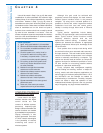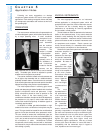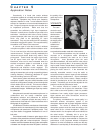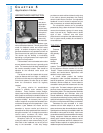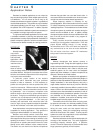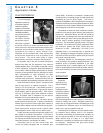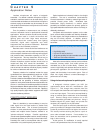
FILM/VIDEOGRAPHY
Film and videography
applications usually call
for lavaliere/ bodypack
wireless microphone
systems to minimize the
visibility of the microphone.
Handheld transmitters
may also be used when
visual appearance is
not anissue. However,
the receivers may be
either fixed or portable.
A common choice is a camera-mounted receiver used
with a camcorder. Microphone/transmitter selection and
placement are as outlined in other sections. Directional
microphones are useful to control ambient noise.
Placement can be consistent with visual requirements
but should be positioned as close as practical to the
sound source. The overall audio quality is largely
determined by microphone selection and placement.
An important area in the use of wireless microphone
systems with video and film equipment is the electrical
interface between them. The interface is specified in terms
of level, impedance, configuration (balanced/unbalanced)
and connector. While the output characteristics of wireless
receivers are well specified and fairly standard, the audio
input characteristics of video equipment are often
unspecified and unique. This is especially true for
consumer video camcorders. Professional video units are
normally designed with standard professional audio inputs.
Most camcorders that have a built-in microphone also
have an input jack for an external microphone. This is
usually a 1/8" mini phone jack. If the wireless receiver is
equipped with a microphone-level 1/4" phone jack output a
simple adapter cable will generally suffice. If the receiver
only has an XLR-type output some additional concerns
arise. An adapter cable or transformer can be used as
described in the receiver setup section above.
Stereo camcorders often use an 1/8" stereo (tip-ring-
sleeve) external microphone jack. To deliver a monophonic
wireless signal to both the left and right audio channels a
mono-to-stereo adapter must be inserted at the input jack.
Some camera-mount receivers include a special output
cable designed to work in either mono or stereo inputs.
Certain camcorder microphone inputs also supply a DC
bias voltage for condenser microphones. In this case a
transformer or blocking capacitor may be required to isolate
the output of the wireless receiver from the DC. Consult the
camcorder literature or manufacturer for details.
Camcorders that do not have manual audio level
controls are always equipped with an automatic gain
control (AGC). Its function is to maintain a constant audio
recording level by increasing the gain for weak signals and
decreasing the gain for strong signals. This circuit is
generally not defeatable. When using the built-in microphone
most direct sound sources are at a significant distance. At the
microphone the overall variation between direct sound level
and background sound level is not very large.
Close-talked microphones, either handheld or lavaliere,
present a much stronger signal relative to the background
sound level. With these devices the AGC will operate at
high gain when only background sound is present and will
quickly reduce gain when a strong close-talk signal occurs.
This will result in audible "pumping" of the background
noise level. The same effect is typically heard in live sports
broadcasts: the crowd noise is quickly suppressed when
the announcer speaks and slowly returns when the
announcer is silent. Unfortunately, if the AGC is not
defeatable there is no convenient way to eliminate this
effect. Operating the wireless microphone system at very
low levels can force the AGC to operate at full gain but this
will result in noisy audio tracks.
Frequency selection for film/videography should be
done according to the guidelines already presented. One
additional source of potential interference is the video
equipment itself since it contains digital and RF circuitry.
Listen for audible effects from both the transmitter and from
the receiver when they are used close to the camera and/or
video recorders.
BROADCAST
Broadcast
applications may
require handheld,
plug-on and/or
bodypack wireless
microphone systems.
To interview random
subjects most field
reporters and roving
talk show hosts prefer a handheld or plug-on transmitter for
maximum mobility and control. Bodypack systems are
used to pick up a single talent when a handheld type would
be cumbersome. Receivers may be in a fixed location for
studio use or may be portable for field use.
Omnidirectional microphones are the preferred choice
for situations where ambient noise is not excessive.
This allows more flexibility in placement and orientation as
well as reduced sensitivity to wind and handling noise.
When ambient noise is a factor or in a setup where
feedback is a possibility a unidirectional microphone may
be necessary. Microphones with good sound quality
and durability are a must.
Selection
and Operation
of Wireless Microphone Systems
50
C HAPTER 5
Application Notes





